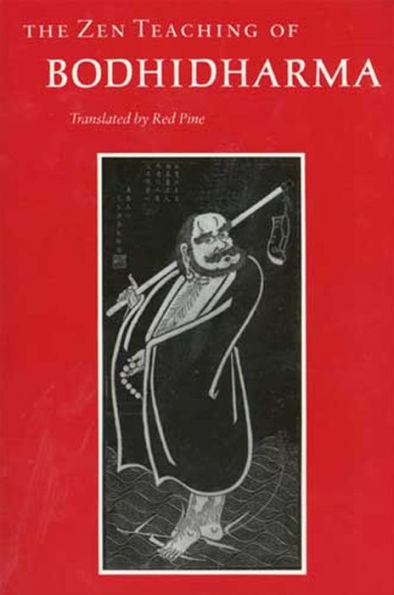Read an Excerpt
The Zen Teaching of Bodhidharma
Outline of Practice
MANY roads lead to the Path,1 but basically there are only two: reason and practice. To enter by reason means to realize the essence through instruction and to believe that all living things share the same true nature, which isn't apparent because it's shrouded by sensation and delusion. Those who turn from delusion back to reality, who meditate on walls,2 the absence of self and other, the oneness of mortal and sage, and who remain unmoved even by scriptures are in complete and unspoken agreement with reason. Without moving, without effort, they enter, we say, by reason.
To enter by practice refers to four all-inclusive practices:3 suffering injustice, adapting to conditions, seeking nothing, and practicing the Dharma.
First, suffering injustice. When those who search for the Path encounter adversity, they should think to themselves, "In countless ages gone by, I've turned from the essential to the trivial and wandered through all manner of existence, often angry without cause and guilty of numberless transgressions. Now, though I do no wrong, I'm punished by my past. Neither gods nor men can foresee when an evil deed will bear its fruit. I accept it with an open heart and without complaint of injustice." The sutras say, "When you meet with adversity don't be upset, because it makes sense." With such understanding you're in harmony with reason. And by suffering injustice you enter the Path.
Second, adapting to conditions. As mortals, we're ruled by conditions, not by ourselves. All the suffering and joy we experience depend on conditions. If we should be blessed by some great reward, such as fame or fortune, it's the fruit of a seed planted by us in the past. When conditions change, it ends. Why delight in its existence? But while success and failure depend on conditions, the mind neither waxes nor wanes. Those who remain unmoved by the wind of joy silently follow the Path.
Third, seeking nothing. People of this world are deluded. They're always longing for something—always, in a word, seeking. But the wise wake up. They choose reason over custom. They fix their minds on the sublime and let their bodies change with the seasons. All phenomena are empty. They contain nothing worth desiring. Calamity forever alternates with Prosperity.4 To dwell in the three realms5 is to dwell in a burning house. To have a body is to suffer. Does anyone with a body know peace? Those who understand this detach themselves from all that exists and stop imagining or seeking anything. The sutras say, "To seek is to suffer.
To seek nothing is bliss." When you seek nothing, you're on the Path.
Fourth, practicing the Dharma.6 The Dharma is the truth that all natures are pure. By this truth, all appearances are empty. Defilement and attachment, subject and object don't exist. The sutras say, "The Dharma includes no being because it's free from the impurity of being, and the Dharma includes no self because it's free from the impurity of self." Those wise enough to believe and understand this truth are bound to practice according to the Dharma. And since that which is real includes nothing worth begrudging, they give their body, life, and property in charity, without regret, without the vanity of giver, gift, or recipient, and without bias or attachment. And to eliminate impurity they teach others, but without becoming attached to form. Thus, through their own practice they're able to help others and glorify the Way of Enlightenment. And as with charity, they also practice the other virtues. But while practicing the six virtues7 to eliminate delusion, they practice nothing at all. This is what's meant by practicing the Dharma.
Copyright © 1987 by Red Pine



